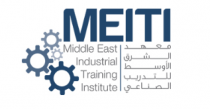Global Mobile Edge Computing Market Report 2020-2025: Multi-access Edge Computing is Crucial for Private Wireless Networks
DUBLIN, Jan. 6, 2021 /PRNewswire/ -- The "Mobile Edge Computing Market by Infrastructure, Equipment Category, Deployment Models, Computing as a Service Offerings, Network Connectivity, Applications, Analytics Types, Market Segment, Industry Verticals, and Region 2020 - 2025" report has been added to ResearchAndMarkets.com's offering.
https://mma.prnewswire.com/media/539438/Research_and_Markets_Logo.jpg
This mobile edge computing market report evaluates the telecom and IT ecosystem in support of MEC including communications and computing infrastructure providers, managed services vendors, carriers, and OTT providers.
This edge computing market analysis includes a focus on company strategies and offerings relative to current and anticipated future market needs. The report also provides a quantitative analysis of the Mobile Edge Computing market including segmentation by industry vertical, region of the world, application, and services. It also provides forecasts for MEC based streaming data and real-time data analytics.
Often used synonymously, MEC refers to Mobile Edge Computing or Multi-Access Edge Computing with the former being more cellular network-centric (LTE and 5G) and the latter terminology adopted by standards groups to generalize edge computing to reflect that it may be also be used by WiFi and other wireless access technologies. The distinction between Multi-Access Edge Computing vs. Mobile Edge Computing for MEC largely ends with radio access and network type as almost every other aspect is the same including localizing computing (e.g. computation and storage closer to the end-user), network element virtualization, software, and service-centric operations.
In cellular networks, edge computing via MEC is beneficial for LTE but virtually essential for 5G. This is because Mobile Edge Computing facilitates optimization of fifth-generation network resources including focusing communications and computational capacity where it is needed the most. The author's research findings indicate a strong relationship between edge computing and 5G. In fact, if it were not for MEC, 5G would continue to rely upon back-haul to centralized cloud resources for storage and computing, diminishing much of the otherwise positive impact of latency reduction enabled by 5G.
Another driver for the multi-access edge computing market is that MEC will facilitate an entirely new class of low-power devices for IoT networks and systems. These devices will rely upon MEC equipment for processing. Stated differently, some IoT devices will be very light-weight computationally speaking, relying upon edge computing nodes for most of their computation needs.
Mobile Edge Computing Market Drivers
The fundamental question often asked by those not close to telecom networks and application optimization is: What is driving the need for edge computing in data centers? There are many reasons. However, the core areas for improvement with mobile edge computing are: throughput, congestion, latency, and backhaul.
Additional important considerations that spawn from these improvements are as follows:
-- Improved Overall Throughput: By way of example, testing between Saguna
Networks and Vodafone indicated substantially lower wait times and
stalls while viewing video.
-- Core Congestion Reduction: Related to improved throughput is the
reduction of core congestion. MEC enables users and devices to
store/access much higher volumes of data by way of direct access to the
Internet rather than relying upon transport through the core of cellular
networks.
-- Application Latency Reduction: Mobile edge computing will be
particularly important in support of Ultra-Reliable and Low-Latency
Communication (URLLC) for latency-sensitive apps and services for
various consumer, enterprise, and industrial use cases. The combination
of 5G and MEC is expected to reduce network latency significantly, which
will enable many previously tethered-only applications and services such
as streaming 4K video, real-time remote control, haptic or tactile
communications, and more.
-- Backhaul Reduction: Related to core congestion reduction, backhaul is
reduced as processing may be done at the edge rather than back-hauled to
more centralized core cloud computing resources. This will be
particularly important for 5G, which would continue to rely upon
back-haul to centralized cloud resources for storage and computing,
diminishing much of the otherwise positive impact of latency reduction
enabled by 5G new radio technology.
-- Network Awareness and Context: Placing Virtual Network Functions closer
to the point of usage allows carriers to better determine context,
leading to operational improvements and better use of localized data.
-- Streaming Data and Real-time Analytics: Edge computing facilitates vast
amounts of fast-moving data from sensors and devices. For many use
cases, data flows constantly from the device or sensor to the network
and sometimes back to the device. In some cases, these streams of data
are simply stored (for potential later use) and in other cases, there is
a need for real-time data processing and analytics.
-- Network and Application Resiliency: Edge computing networks are
distributed and thus more resilient because there are many mini-data
centers rather than one or a few larger ones.
Select Report Findings:
-- Virtualized servers in support of the multi-access edge computing market
will reach $127M market by 2025
-- Breaking down the market by category of use, edge accelerated Web
browsing will represent a $67.8M market by 2025
-- Driven by enterprise-hosted deployment, the mobile edge computing as a
service market will reach $104.3M by 2025
-- Driven by private LTE and 5G networks for the industrial segment, the
largest industrial vertical for MEC will by manufacturing
-- Driven by smart factories, the multi-access edge computing market in
support of manufacturing in Asia will reach $257.4M by 2025
Companies Mentioned
-- ADLINK Technology Inc.
-- Advanced Micro Devices
-- Advantech
-- Affirmed Networks
-- Akamai Technologies
-- Allot Communications
-- Brocade Communications Systems
-- Cavium Networks
-- Ceragon Networks
-- Cisco Systems
-- Cloudify
-- Cradlepoint
-- EdgeConneX
-- Edgeworx
-- Ericsson
-- Fujitsu Technology Solutions
-- Hewlett Packard Enterprise
-- Huawei Technologies Co. Ltd.
-- IBM Corporation
-- Integrated Device Technology
-- Intel Corporation
-- InterDigital Inc.
-- Juniper Networks
-- MobiledgeX
-- NEC Corporation
-- Nokia Corporation
-- PeerApp Ltd.
-- Pixeom
-- Pluribus Networks
-- Quortus
-- Redhat, Inc.
-- Saguna Networks
-- Samsung Electronics Co., Ltd.
-- Sony Corporation
-- SpiderCloud Wireless
-- Vapor IO
-- Vasona Networks (ZephyrTel)
-- Xilinx, Inc.
-- Yaana Ltd.
-- ZTE Corporation
For more information about this report visit https://www.researchandmarkets.com/r/bikzic
Research and Markets also offers Custom Research services providing focused, comprehensive and tailored research.
Media Contact:
Research and Markets
Laura Wood, Senior Manager
press@researchandmarkets.com
For E.S.T Office Hours Call +1-917-300-0470
For U.S./CAN Toll Free Call +1-800-526-8630
For GMT Office Hours Call +353-1-416-8900
U.S. Fax: 646-607-1907
Fax (outside U.S.): +353-1-481-1716
View original content:http://www.prnewswire.com/news-releases/global-mobile-edge-computing-market-report-2020-2025-multi-access-edge-computing-is-crucial-for-private-wireless-networks-301201905.html
SOURCE Research and Markets




